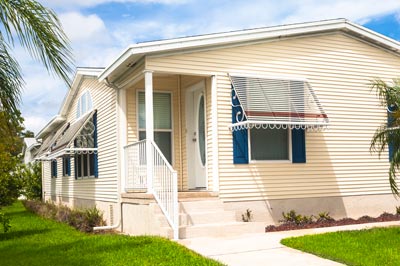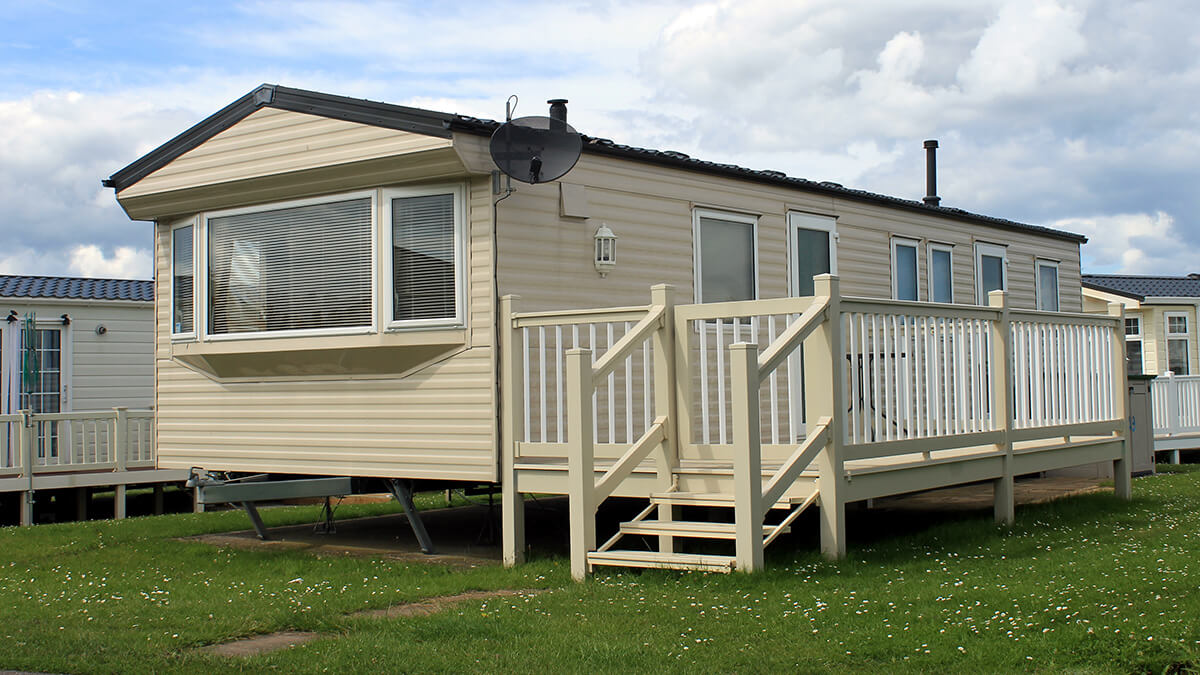Preventing water damage to your home

Water damage – whether caused by leaks or condensation - can do more than cause unsightly stains in your home. It can cause permanent structural damage to the home and erode its strength.
Start with the roof
Your roof is “out of sight and out of mind” – so it's easy to forget – until you have unsightly water damage from a leak. Defend your home by stopping that leak before it starts. Corrosion or deterioration of your roof, wind or hail damage or improper installation of vents, flues, chimneys, air conditioners, evaporative coolers or condensers can all result in roof leaks.
Regular inspections and maintenance can prevent problems before they begin. Inspect your roof for punctures, cracks or breaks. Clean any you find and apply a compatible patching compound or sealant. Each year, clean and inspect rain gutters, downspouts and extensions for leaks or holes. All types of manufactured home roofs should be checked once a year – whether shingled, metal, vinyl or fiberglass.
To avoid damage to the seals and seams of your roof, keep your weight directly on the rafters. If you have a bowstring or low-pitch rafter, place a plywood sheet across the rafter so you can distribute your weight evenly. While on the roof remove dirt, leaves, branches and any other debris on your roof or gutter – especially any item that may cause a roof puncture.
Seal metal roofs with a good commercial manufactured home roof coating at least every other year – more often in some climates. Apply roof coating around all vents and seams and use coating along the drip edge of the roof. Make sure to cover all exposed screw heads, fasteners and other areas susceptible to leaking. Don't forget to inspect and seal the roof around vents and chimneys. Look for and repair loose, damaged or missing shingles, missing or damaged vent caps, raised nail heads and anything else that's in disrepair or could cause damage.
Outside walls, doors and windows
Inspect outside walls, doors and windows each spring and fall for unusual wear or tear. Water and moisture can penetrate these common areas if they're not maintained regularly. Repair or replace caulk, weather stripping, glazing, window seals, door seals or any other exterior area damaged by use, abuse or normal weathering. Examine your exterior siding and replace any missing or damaged fasteners or screws. Repair or replace punctured siding.
Remember to look under your home for sagging, torn or water-spotted bottom barrier. This can indicate poor or damaged insulation, which may cause water lines to freeze and break. These symptoms also can indicate an existing leak.
Check your home's pneumatic storm door closer and safety chain. If these are loose or not working properly the storm door may blow open. That lets water in and can cause additional damage. Inspect exterior doors, especially wooden ones, for wear and tear and cracking.
Also check weather stripping and seals as well as the sill and the threshold for signs of leaking or other damage. Inspect the putty or caulking around metal windows. Clean and remove cracked or dried-out material and replace it with an upgraded sealant or caulk.
Eliminate excess moisture
Today's well-built, well-insulated homes can trap excess moisture and condensation inside, especially if you have inadequate ventilation. This unwanted moisture shows up as: musty odors, rusty stains around light fixtures, damp, sticky floors, mildew along the ceiling, wall and baseboard edges, dripping pipes, condensation on windows and cold surfaces, and mold and mildew growth.
Good preventive maintenance can help eliminate many moisture problems. Keep inside air circulating with vents and fans to avoid condensation. Use exhaust fans in the bathroom when showering. It's a good idea to have an exhaust fan installed in your laundry area and use it when doing laundry. Also, make sure your dryer is vented to the outside.
Fix leaky faucets and dripping toilets. In cold climates, water flowing down the drain under the home may freeze, causing water to back up through the drain lines and into your home. Invest in a good portable dehumidifier with a humidity control. Choose one that shuts off automatically when the collector pan is full.
Use storm windows to help conserve energy and keep condensation from forming on windows. An added benefit – they help reduce heat loss.
Be sure the skirting around the base of your home is well ventilated and allows air to circulate freely, to help eliminate unwanted moisture being drawn into the sub-flooring of your manufactured home.
Inside your home
Obviously a dripping pipe can cause water damage inside your home. To find problems before they cause damage here are some tips: Listen for any unusual hissing sounds. This can be a pinhole leak in a water line within the floor or wall. Periodically check hard-to-reach, seldom seen spaces around the water heater, under sinks and behind clothes washers. Check the ice maker lines and filters for your refrigerator, too.
Look for discolored floor coverings or sub floors – usually a sign of a leak. Water stains and wetness are often caused by loose or damaged plumbing fixtures or fittings. Moisture at the base of a toilet may indicate a deteriorated wax ring, which is easily replaced. If you discover interior water damage correct the problem immediately. If you can't make the repair yourself, hire a qualified repair person.
If your water supply has over 80 pounds of pressure, consider having your repair person install a pressure regulator to help avoid high water pressures that may cause a line rupture or leak.
Emergency tips
If you discover a build-up of water on the floor, find standing water in your home or experience severe, sudden and accidental water damage, take steps to begin ventilating and drying out your home immediately.
Here are some precautions to start with until help arrives:
- Shut off the water source, if possible.
- Protect your property from further damage with temporary, reasonable and necessary repairs, like plywood or plastic covers over roof or wall openings.
- Move household items to an undamaged area of your home or cover them with plastic. Mop, blot up or wet vac as much water as possible.
- Don't leave books, magazines or other colored items on wet carpeting. Remove oriental or other colored throw rugs from wet wall-to-wall carpeting. Remove the pad from under saturated carpets Place wood blocks or aluminum foil between furniture legs and wet carpeting.
- Wipe excess water from wood furniture. Open drawers and cabinets to aid in faster drying. Open windows to speed drying.
- Turn on the air conditioner or fans for maximum drying in hot weather, as long as it's safe for you to use electricity.
- Make small holes in sagging ceilings to get rid of trapped water. Be sure to put a pan or bucket below to catch the water before you make a hole. And don't turn on a ceiling fixture if the ceiling is wet – don't mix water and electricity!
- Remove any insulation that is wet and have it replaced with new, dry insulation.
- Treat minor mold growths quickly with a solution of one cup chlorine bleach to one gallon of water. Leave this solution on the mold for approximately 15 minutes to kill the mold spores. Be sure to take proper precautions when using chlorine bleach.
After you've made temporary repairs and are ready to start putting your home back together, be sure to:
- Make sure that flooring and carpets are dry before starting any repairs or making replacements.
- Hire a professional to clean and re-lay your carpet after the carpet pad has been replaced.
- If you discover mold in the areas you are cleaning, consider calling in a professional cleaning firm. Some molds can cause health problems.
Clean-up cautions
Stay safe while you clean up. Don't use your household vacuum to remove water. Don't use appliances while standing on wet carpets or floors. Don't leave wet fabrics in place. Dry them quickly. Prop up wet upholstered cushions for even drying.


